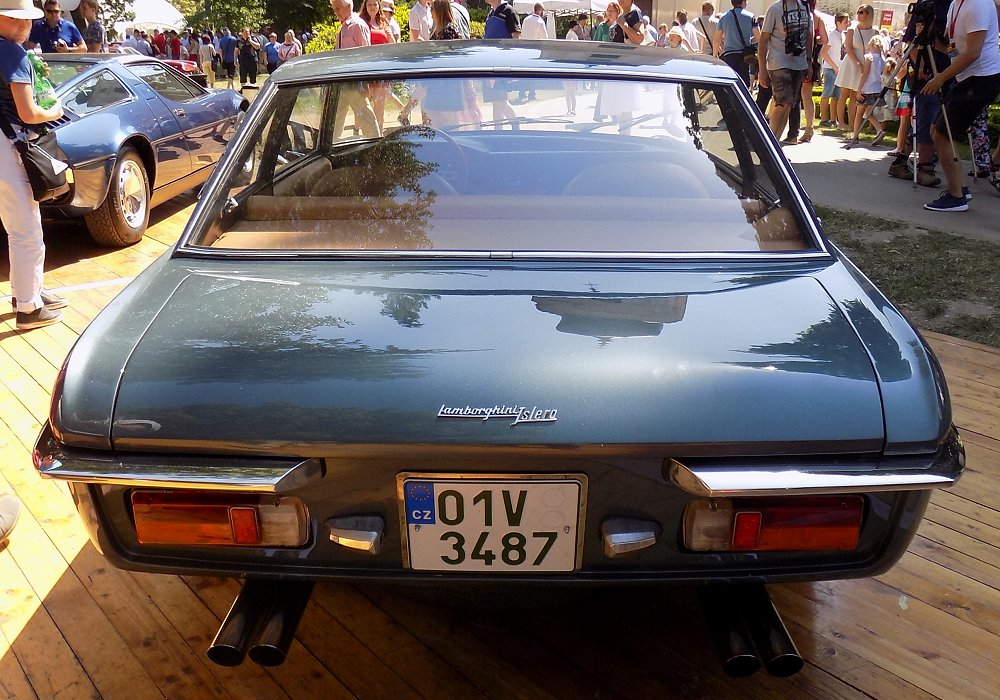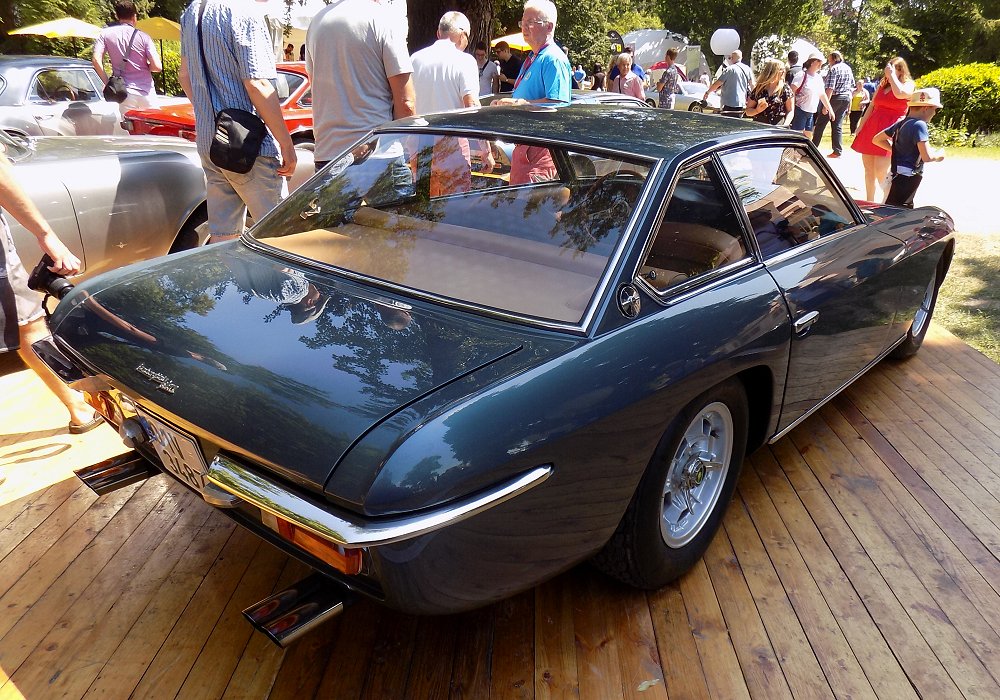Description
The Lamborghini Islero 400 GT 2+2 was introduced in 1968 as the successor to the 400 GT 2+2, marking a new chapter in Lamborghini’s evolution as a builder of refined, high-performance grand touring cars. It was the first Lamborghini to be released after the closure of Carrozzeria Touring, and it represented Ferruccio Lamborghini’s desire to continue offering a fast, luxurious, and understated GT alongside the revolutionary mid-engined Miura. With its powerful V12 engine, elegant hand-built body, and emphasis on comfort and usability, the Islero embodied Lamborghini’s original grand touring philosophy—powerful, beautiful, and practical enough for daily use.
The Islero’s development was entrusted to Carrozzeria Marazzi of Milan, a small coachbuilding firm founded by former employees of Touring after it went bankrupt in 1967. Ferruccio Lamborghini wanted a car that retained the 400 GT’s mechanical sophistication but with more contemporary styling and improved visibility and ergonomics. The result was the Islero, a car whose design was discreet but refined—less flamboyant than the Miura, but perfectly in keeping with Lamborghini’s tradition of elegant understatement.
Beneath the Islero’s clean, angular bodywork lay Lamborghini’s proven tubular steel chassis, originally designed by Gian Paolo Dallara. The 400 GT’s fully independent suspension layout—double wishbones, coil springs, and telescopic dampers at all four corners—was retained but refined for greater comfort and stability. Power came from the same 3,929 cc V12 engine, an all-aluminium masterpiece designed by Giotto Bizzarrini and further developed in-house by Lamborghini’s engineers. With six twin-choke Weber carburetors and four overhead camshafts, the engine produced 325 horsepower at 6,500 rpm and 370 Nm of torque.
This sophisticated powerplant was paired with a five-speed manual gearbox, driving the rear wheels through a Salisbury limited-slip differential. Performance was exceptional for a four-seat GT of the late 1960s: 0 to 100 km/h (62 mph) took around 6.5 seconds, and top speed was approximately 155 mph (250 km/h). Despite its performance, the Islero was remarkably smooth and tractable, capable of idling quietly in traffic yet surging forward with turbine-like force when unleashed on open roads.
Visually, the Islero reflected a shift toward more geometric, modern forms. Designed by Mario Marazzi, the car had clean, unadorned lines and a strong sense of proportion. The long bonnet and short rear deck gave it classic grand touring balance, while the slightly raised roofline allowed for genuine 2+2 seating. The body featured subtle creases along the flanks, a low beltline, and flush-mounted door handles that enhanced the car’s understated elegance. Pop-up headlights gave the front end a distinctive, modern character, while the rear was simple and uncluttered, with small, rectangular taillights and twin exhaust outlets.
The Islero’s interior was one of its most impressive features. The cabin was designed for comfort and sophistication, trimmed in the finest Connolly leather with deep, well-cushioned seats front and rear. The dashboard was beautifully crafted, featuring a symmetrical arrangement of large Veglia Borletti instruments set in a brushed metal or wood veneer fascia. Air conditioning, electric windows, and improved sound insulation were available, reflecting Ferruccio Lamborghini’s desire to make the Islero a car that could be driven long distances in comfort and style. Visibility was excellent, thanks to large glass areas and thin pillars—an improvement over the 400 GT’s lower, more enclosed cabin.
On the road, the Islero delivered a driving experience that was refined yet engaging. The V12 engine provided an abundance of smooth, linear power, and the gearbox was precise and satisfying to use. The steering, assisted by the car’s balanced weight distribution, was light but communicative, while the independent suspension delivered both excellent ride comfort and sure-footed handling. The car’s demeanor was calm and composed—less extroverted than the Miura, but equally impressive in its own right. It could cruise quietly at high speeds for hours, its mechanical refinement setting a new benchmark for Lamborghini’s front-engined GTs.
Production of the Islero 400 GT 2+2 was limited, with only 125 examples built between 1968 and 1969. While it never achieved the fame of the Miura, it found favor among connoisseurs who appreciated its subtlety and craftsmanship. Ferruccio Lamborghini himself used an Islero as his personal car, valuing its comfort, elegance, and practicality. In 1969, Lamborghini introduced the updated Islero S (sometimes referred to as the Islero GTS), which featured minor styling changes and a power increase to 350 horsepower.
Today, the Islero 400 GT 2+2 is regarded as one of Lamborghini’s most understated and sophisticated classics. Its design, while simple, has aged gracefully, and its mechanical excellence remains a testament to the brand’s early commitment to quality and refinement. Collectors admire it for its rarity, purity of form, and the effortless way it combines power with elegance.
The Lamborghini Islero 400 GT 2+2 was, in essence, Ferruccio Lamborghini’s ideal car—fast, comfortable, discreet, and impeccably built. It carried forward the spirit of the 350 and 400 GTs while offering a glimpse of the brand’s future sophistication. In an era defined by flamboyance and excess, the Islero stood apart as a car of quiet authority—a true grand tourer that spoke not with flash, but with confidence, craftsmanship, and enduring grace.




